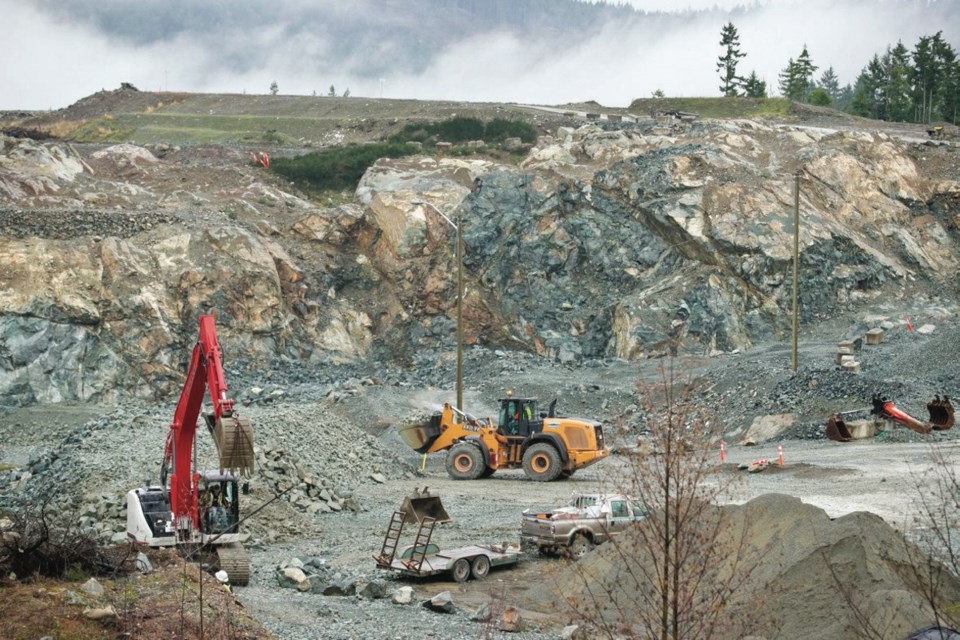 The owners of the contaminated-soil site near Shawnigan Lake didn’t hold back in describing the impact the government’s change of heart would have on their company, its operation and its employees.
The owners of the contaminated-soil site near Shawnigan Lake didn’t hold back in describing the impact the government’s change of heart would have on their company, its operation and its employees.
After the government revoked the operating permit, Cobble Hill Holdings president Mike Kelly wrote to Environment Minister Mary Polak last month to warn her of the consequences.
“The resulting impact is yet to fully crystallize, but we expect it will be catastrophic on our company, employees and ourselves.”
He said that although the environment will remain protected under the approved closure plan, “we will be destroyed.”
The warning hasn’t had much impact, at this point. The ministry is tightening the screws on the firm, and the tone of the correspondence suggests it isn’t going to cut the company any breaks in the upcoming arguments about exactly how the site will be shut down.
The crucial question is what will happen to the 100,000 tonnes of soil deemed contaminated that was dumped at the site during the few years it operated. The most recent update from the ministry says the company has until April 17 to “either take actions to ensure long-term safety and stability of the soil in the landfill, or must develop and implement a plan to remove the soil from the site.”
“If at any time ministry technical staff determine that the soil must be removed in order to ensure protection of the environment, the ministry may order the company to do so.”
The site met all the stringent standards for safe storage in the early going, and the closure plan allows for the encapsulation of the soil by way of sealing the dump to prevent runoff. But the letters over the past several months show the ministry has been increasingly strict in interpreting standards and imposing new ones. The firm has indicated it will co-operate with the government to ensure a safe closure of the encapsulated cell.
The question is whether that will be enough.
The operators won all the necessary approvals from officials, despite widespread public opposition to the idea of storing contaminated soils in a quarry above Shawnigan Lake.
Polak repeatedly said she could not intervene because the landfill was approved strictly on its technical merits.
That started changing last year, when the ministry concluded operating requirements were not being met. The firm has been disputing those findings throughout. After a judge was sharply critical of the firm’s conduct and ordered a re-hearing at the environmental appeal board, the government pressure mounted.
Kelly’s letter takes issue with the ministry’s tight deadlines for increasing the security bond.
“He said the ministry dealt a blow that compounded an already precarious situation. We cannot recover from what you have done.”
He also noted the political timing.
“We trust you will consider whether it is in the public interest to compound that injury to us in the exercise of your discretion in the eight weeks before the next provincial election.”
If the ministry eventually concludes that removal is warranted, it expects the company to pay the cost. It cites the general rule of the polluter-pay principle. The ministry also warns it could recover costs through the courts if the company fails to comply.
The government holds a $220,000 financial security from the company and says that money could be used for site management and cleanup.
But removal costs would be many times that amount. And the firm’s outline of its current situation suggests any court action would be moot.
The future of the site, and the firm, will be decided in the months ahead. The bigger issue is what happens to contaminated soil on Vancouver Island.
When the environmental appeal board rejected the objections and upheld the site in 2013, it noted there are clear benefits to having a regulated, approved soil dump.
It avoids the illegal dumping of soil in unapproved locations that put environment and health at risk, something that’s been going on for years.
“The evidence before the panel is that such unauthorized actions have been happening in the Cowichan Valley; it is not an ‘imaginary’ risk.”



